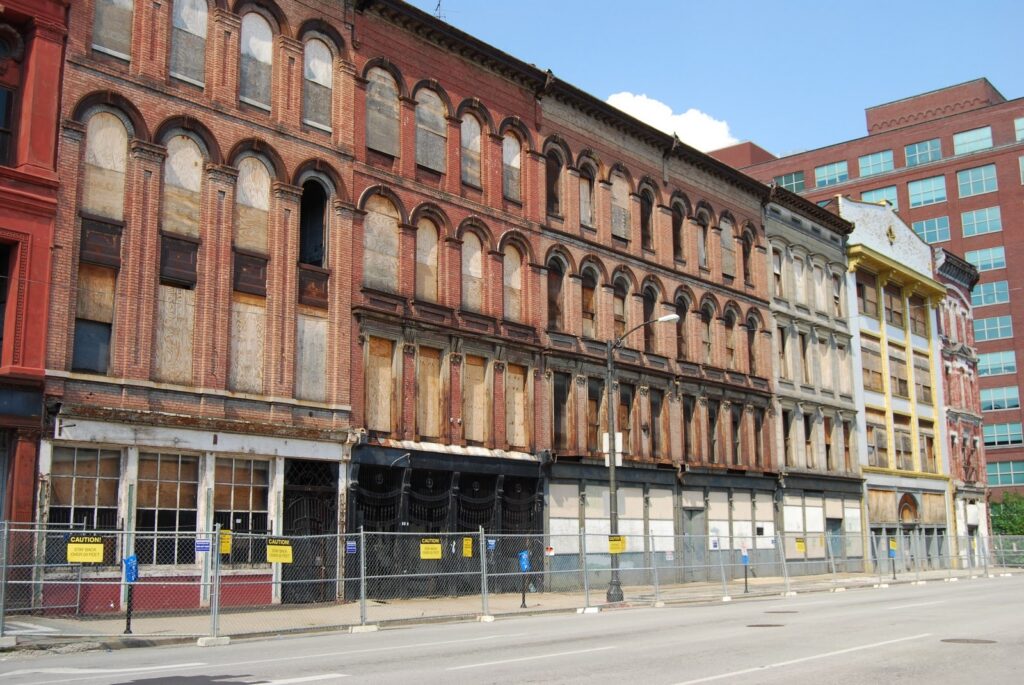 |
| Whiskey Row, Louisville, Ky. |
Local neighborhoods activist Hayward Wilkirson penned a terrific piece for ProgressLex warning about the struggle to preserve an area of downtown Louisville known as Whiskey Row:
a collection of seven historic buildings (most of a city block) listed on the National Register of Historic Places and protected by the Louisville Historic Landmarks Commission. These buildings, some of Louisville’s most significant architectural treasures, comprise the largest cast-iron-fronted building district outside of Soho in New York City.
Truly a unique and beautiful set of buildings obviously in need of great repair, developer Blue wants to demolish the buildings apparently with no plan for what should come next. Wilkirson and others have labeled this “Louisville’s Centerpointe.” The buildings have been labeled by local and national registers as historic so that extra steps must be taken before any demolition can occur. Without these requirements being fulfilled, Louisville Mayor Greg Fischer appears to have given the go ahead for demolition.
I rarely make it to Louisville, but I do remember driving down its Main Street a few years ago and thinking about how terrific it would be if this great group of mid-nineteenth century buildings were restored and reused. Now it is time to either sink or swim.



